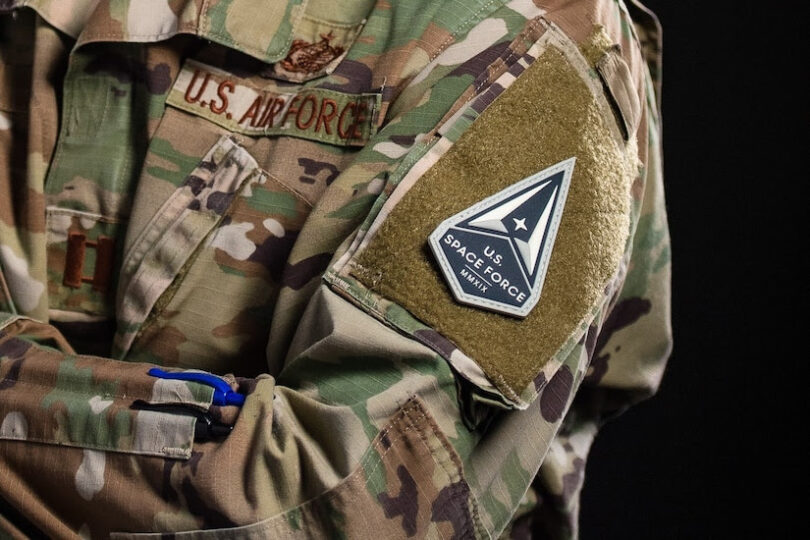Katie Lange
WASHINGTON: Since 2019, The Institute of Heraldry at Fort Belvoir, Virginia, has been working with Space Force leaders to create insignia for seals, badges, chevrons and other uniform accessories to differentiate the newest branch from the rest of the force.
The biggest difference in some of these accessories, you’ll notice, is that they’re a completely different material than the embroidered pieces on the uniforms of the other services.
Tom Casciaro, chief of The Institute of Heraldry’s technical and production division, said they were initially going to use the standard textile procedures they use for other branches, but they weren’t able to because of the intricacy of the Space Force’s approved designs. Officials with the service mentioned possibly using polyvinyl chloride, or PVC, a material that had been used to make some of Space Force’s unofficial morale patches.
PVC is a frequently used plastic polymer. A rigid type of PVC is commonly used in piping in plumbing and agriculture. However, there’s also a second type that’s plasticized and more flexible. That type of PVC is often used as electrical wiring insulation or in flooring. Engineers have said it can even act as an effective replacement for rubber, which is what the PVC insignia feel and look like.
Casciaro said his team did some research and learned that the companies that use PVC for insignia weren’t based in the U.S. — something that’s a requirement for the institute. So, some of their certified manufacturers purchased their own PVC-making equipment and figured out how to do it themselves. Before production could begin, officials at the institute said they had some concerns about the durability of the PVC, so they enlisted Army’s Natick Soldier Systems Center to test the materials.
“They froze it. They burned it. They did this accelerated fading thing; they have a machine that will fade something in hours that would normally take years to fade in the sun,” Casciaro said. “It passed everything, and it performed equally to the textile.”
Thread Vs. PVC
So, which is better? It likely depends on who you ask. When you see the PVC versus the textile versions up close, there are subtle differences.
Casciaro compared a PVC Space Force headquarters patch to the embroidered Army star patch. “You can actually see how much cleaner the detail is in the embroidery versus the PVC,” he said.
But when it came to flag patches, the PVC stars were a much cleaner look.
“The biggest difference is on the embroidery, where you have to put a border on the flag. … We went with gold because that’s what you would see on a ceremonial flag,” Casciaro said. “We had the opportunity with the PVC flag to take that off and use a color that matches the material on the uniform, so it blends in and all you see is the flag. In our opinion, that’s the way it should be.”
The institute has already produced PVC insignia for 21 of the Space Force’s units. Casciaro said they expect to complete insignia for the remaining 45 units by the end of the fiscal year.
Will any of the other branches ever switch to PVC? That’s anyone’s guess. But for now, it remains a unique feature of Space Force uniforms.







